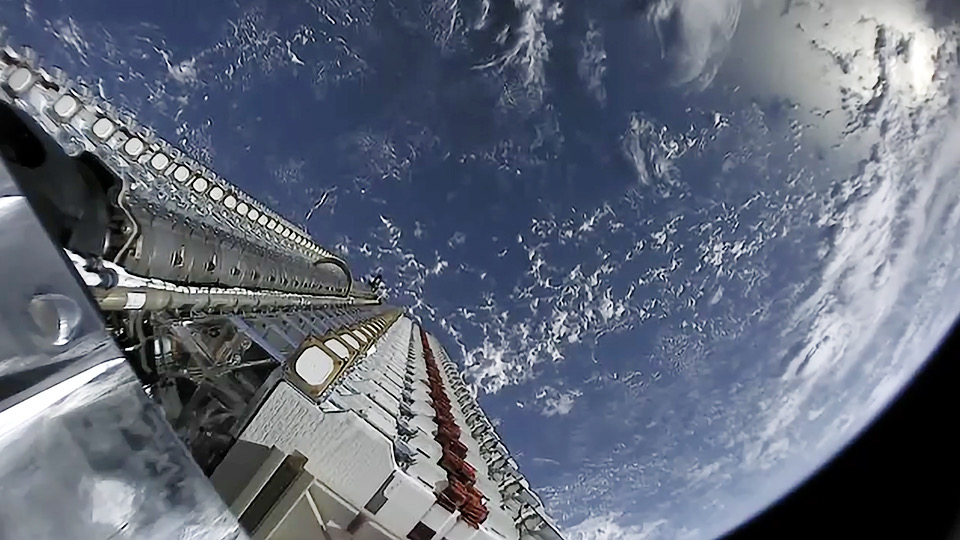· space brief · 5 min read
Space Brief 27 Feb 2025
Today's highlights include Rocket Lab's progress on the Space Force's VICTUS HAZE mission, BlackSky's new government contract, and AEI's policy recommendations for Space Force restructuring.

📄Top Stories
Today’s space news covers key developments in space technology and military operations, with Rocket Lab moving forward on a critical U.S. Space Force mission and BlackSky securing a major defense contract to bolster tactical satellite capabilities. Additionally, a new AEI policy paper offers strategic insights for improving organizational structures within the Space Force.
📰Detailed Coverage
Rocket Lab Advances Space Force’s VICTUS HAZE Mission
Rocket Lab National Security LLC is making significant strides in its collaboration with the U.S. Space Force’s Space Systems Command on the VICTUS HAZE mission. Following the completion of the Critical Design Review, Rocket Lab has entered the production phase for this tactically responsive space mission designed to enhance rapid deployment capabilities. This project is part of a $32 million contract, emphasizing Rocket Lab’s role in advancing military space operations.
The VICTUS HAZE mission demonstrates Rocket Lab’s growing influence in the defense sector, pushing the boundaries of space technology and responsiveness. With a focus on rapid launch capabilities, the mission aligns with the strategic goals of enhancing satellite deployment readiness. Satellite tracking features on our web app can offer real-time mission updates and trajectory data.
Read the full story: Space War
BlackSky’s Tactical GEOINT Expansion with DIU Contract
BlackSky Technology Inc. has been awarded a substantial contract by the Defense Innovation Unit for launching a new Gen-3 Tactical GEOINT satellite. This contract supports the expansion of BlackSky’s geospatial intelligence capabilities, building on previous U.S. government-backed research initiatives. The project aims to advance space-based intelligence, surveillance, and reconnaissance technologies crucial for national security.
This contract underscores the importance of geospatial intelligence in modern defense strategies, with BlackSky poised to deliver enhanced tactical capabilities. The integration of advanced ISR tech into satellite operations promises to make tracking and data collection more robust, paving the way for improved defense planning and operations.
Read the full story: Space War
AEI Policy Paper on Space Force Restructuring
A new policy paper from the American Enterprise Institute recommends substantial changes for the U.S. Space Force’s organizational framework. The paper advocates for combining acquisition and operational functions under unified mission areas, challenging the current trajectory of establishing a Space Futures Command. The document emphasizes efficiency and adaptability in meeting future space challenges.
The AEI’s proposal reflects broader strategic efforts to optimize military space operations, promoting a more streamlined and mission-oriented approach. This recommendation comes as the Space Force continues to define its role and structure within the broader defense landscape, highlighting the ongoing need for strategic evolution.
Read the full story: Breaking Defense
Japan’s Strategic Expansion in the Indo-Pacific
Japan is actively engaging in new industrial relationships, aiming to strengthen its strategic influence in the Indo-Pacific. Recent efforts include providing radar systems to the Philippines and marketing the Mogami frigate to Australia, signifying a shift towards enhancing regional security ties through technology sales.
These initiatives are seen as a strategic maneuver to bolster Japan’s defense posture and leverage its advanced technological capabilities in an increasingly complex geopolitical landscape. As regional security dynamics evolve, satellite technologies will play an essential role in monitoring and responding to potential threats.
Read the full story: Breaking Defense
Army Develops Autonomous Logistics Vehicles
The U.S. Army has partnered with Carnegie and Forterra to prototype autonomous logistics trucks, with a decision expected by mid-2026. Despite potential budgetary constraints, this project represents a leap towards effective autonomous vehicle technology for logistics, streamlining military supply chain operations.
Autonomous vehicle development is crucial for enhancing military logistics, offering the potential for increased efficiency and reduced human risk. These advancements in autonomy and logistics are vital for maintaining a technologically advanced defense infrastructure.
Read the full story: Breaking Defense
🛰️Satellite Spotlight
- Satellite Name: CHINASAT 2E
- NORAD ID: 49062
- Launch Date: 2021-08-05
- Mission: Provides communication services
- Orbit: Inclination: 0.0294°, Period: 1459.0 minutes, Eccentricity: 0.0000133
- Operator: ZLZB
- Fun Fact: CHINASAT 2E, also known as Zhongxing 2E, employs the DFH-4 platform, a reliable and versatile bus used extensively in Chinese communication satellites.
Current TLE Data:
1 49062U 21071A 25057.80800800 -.00000292 00000-0 00000-0 0 9999
2 49062 0.0294 269.5246 0000133 76.5361 199.7264 1.00268374 13279Track this satellite in real-time on our web app: Track CHINASAT 2E
🚀 Upcoming Space Launches
February 27
- Russian Federal Space Agency (ROSCOSMOS) Soyuz 2.1a:
- Progress MS-30 (91P) from Baikonur Cosmodrome, Republic of Kazakhstan (21:24 UTC)
- Progress resupply mission to the International Space Station.
March 1
- ExPace Kuaizhou-1A:
- Unknown Payload from Jiuquan Satellite Launch Center, People’s Republic of China (09:51 UTC)
- Details TBD.
March 2
-
SpaceX Falcon 9 Block 5:
- Starlink Group 12-20 from Cape Canaveral SFS, FL, USA (01:57 UTC)
- A batch of satellites for the Starlink mega-constellation - SpaceX’s project for space-based Internet communication system.
-
Galactic Energy Ceres-1:
- Unknown Payload from Jiuquan Satellite Launch Center, People’s Republic of China (07:49 UTC)
- Details TBD.
-
Russian Space Forces Soyuz 2.1b/Fregat-M:
- Glonass-K2 No. 14 from Plesetsk Cosmodrome, Russian Federation (22:00 UTC)
- Glonass-K2 are the fourth generation of satellite design for the GLONASS satellite navigation system. This generation improves on accuracy, power consumption, and design life.
March 3
-
SpaceX Falcon 9 Block 5:
- SPHEREx & PUNCH from Vandenberg SFB, CA, USA (03:09 UTC)
- SPHEREx is a planned two-year astrophysics mission to survey the sky in the near-infrared light. PUNCH mission will focus on the Sun’s outer atmosphere and its solar wind generation.
-
SpaceX Falcon 9 Block 5:
- Starlink Group 12-21 from Cape Canaveral SFS, FL, USA (06:55 UTC)
- A batch of satellites for the Starlink mega-constellation - SpaceX’s project for space-based Internet communication system.
Note: Launch dates and times are subject to change due to technical or weather considerations.

Maurice Stellarski





